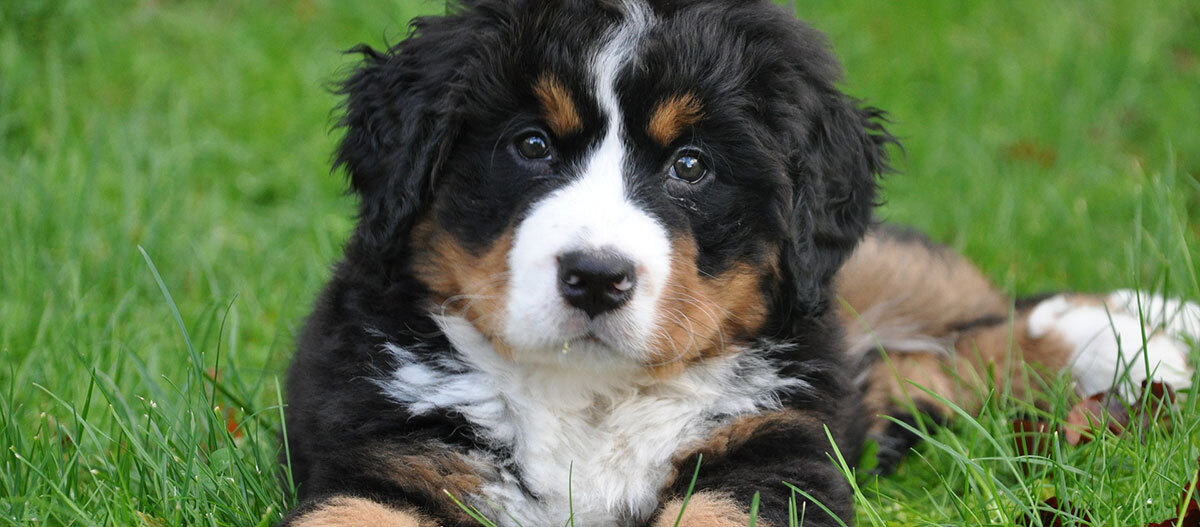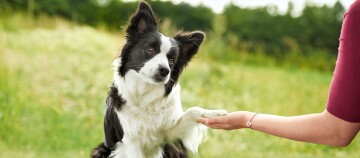Bernese Mountain Dog – Loving, Large, Self-Confident and Cuddly
07.10.2022 - Reading time: 3 minutes

The Bernese Mountain Dog is the right companion for you if you want a breed with a more leisurely temperament. The original breed name, Dürrbächler, after a village in the canton of Bern, did not catch on. Would the Bernese Mountain Dog have enjoyed the same popularity that it has today if it had kept its original name?
One thing is certain, its calmness and self-confidence qualify it as a level-headed rescue and search dog. As a quiet and people-oriented leisure companion, the impressive Swiss cuts an ideal figure.
From farm to screen favourite
In rural Switzerland, the Bernese Mountain Dog was very popular. It guarded flocks, house and yard; but its power was also harnessed as a hauling dog for the milk carts. The breed has been systematically bred since 1892. In 1910, the Bernese Mountain Dog came to Germany and aroused the interest of dog lovers at a dog show in Burgdorf, Lower Saxony.
Character of the Bernese Mountain Dog
The character of the Bernese Mountain Dog radiates comfort, which is also reflected in its good-natured personality. Bernese Mountain Dogs are generally considered to be affectionate, but they can also be quite moody at times. This dog breed is not recommended as a family dog that grows up with children. However, don’t skimp when it comes to stroking the fluffy giant and don’t leave him alone for too long. The Bernese Mountain Dog can also be stubborn and surprise people with its own ideas. On the other hand, the character of a well-trained Bernese Mountain Dog is characterised by anticipatory obedience, the animal thinks for itself and instinctively makes the right decisions. Your life alongside a Bernese Mountain Dog will certainly not be boring.
Training and husbandry of the Bernese Mountain Dog
The Bernese Mountain Dog is not a lively sporting ace, but likes exercise and also needs a lot of it. Long walks are more its thing than tireless romping. It is ideal as a companion for long hikes, but not as an active jogging or cycling partner. Its hunting instinct is only moderately developed, agility sport is not its thing at all. But as soon as it sees snow, the Bernese Mountain Dog is unstoppable – it loves to frolic in winter.
It also knows exactly what it wants. When it doesn’t feel like it, it deliberately switches its floppy ears off and acts like a silly goose with a penchant for nonsense. When training the Bernese Mountain Dog, you have to show consistency, empathy and patience, even if the gentle giant acts as a charming slob. Your living situation is important for keeping a Bernese Mountain Dog – the large dog needs a lot of space. A home with access to a garden is ideal.

Grooming of the Bernese Mountain Dog
If feels good in cold weather, its coat makes it more difficult in the heat. To keep the Bernese Mountain Dog’s coat in order, you should brush it out at least every two days. Daily grooming is recommended during moulting. The Bernese Mountain Dog only needs a bath in exceptional cases. Pay attention to its food, especially for puppies. As with other large dog breeds, the food should not be too rich in protein, as this can promote diseases during growth. Because of its size, the Bernese Mountain Dog is prone to hip and elbow dysplasia. Gastric torsion, kidney failure and an increased risk of cancer (histiocytosis, lymphosarcoma) are other diseases typical of the breed.
NewsletterBernese Mountain Dog
Breed | Bernese Mountain Dog |
Origin | Switzerland |
Classification | Molossian breeds, Pinschers and Schnauzers, Swiss Mountain Dogs |
Size | Males 64 to 70 centimetres shoulder height – females 59 to 66 centimetres shoulder height |
Weight | Males 45 to 50 kg – females 35 to 40 kg |
Physique | stocky limbs, strong muscles |
Eyes | almond-shaped, dark brown |
Ears | large, high set floppy ears |
Coat and colour | fur lush, long, wavy, soft, shiny; colour black, brown-red tan, white markings on head and chest, white paws and tip of tail desirable |
Special features | loves snow |
Nature | loyal, good-natured, cuddly |
Care | brush every two days, groom daily when moulting |
Health | Predisposition to gastric torsion, cancer, renal failure, roll-eye, elbow and hip dysplasia |


